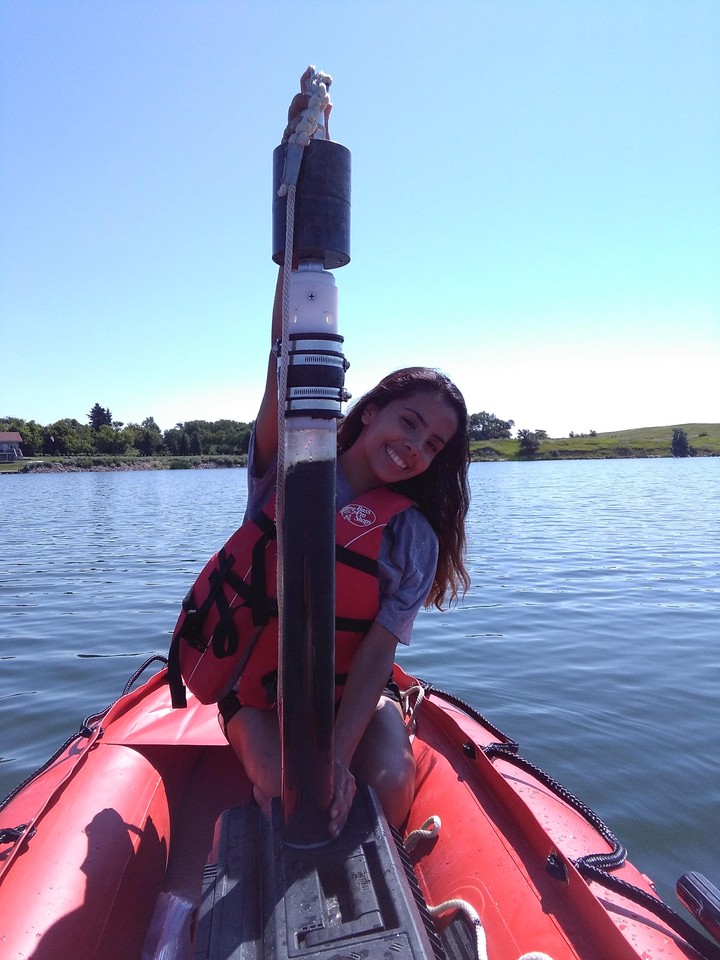Can zooplankton keep up with climate-driven salinity change in Great Plains' lakes?
 Mariam collecting a core on Moon Lake, North Dakota
Mariam collecting a core on Moon Lake, North Dakota
The Great Plains of North America are projected to become more arid as the climate changes over the next century. As the climate becomes drier, lake salinity levels in the region are expected to increase. Increased salinity levels may affect biota in these ecosystems, including important members of the food web such as zooplankton. Zooplankton are aquatic invertebrates that act as primary and secondary consumers, transferring energy from algae to macroinvertebrates and fish. Salinity has a strong influence on the composition of zooplankton communities on the Great Plains, but little is known about the ability of individual species to tolerate increased salinity levels. For this study, I used a resurrection ecology approach to examine if common cladoceran zooplankton species can tolerate increases in salinity and if there is evidence that these species can adapt to salinity changes over time. I worked with egg banks of Daphnia and Ceriodaphnia species collected from Moon Lake, North Dakota; a lake that has experienced significant fluctuations in salinity over time and for which a history of salinity levels has been reconstructed from diatoms. I hatched eggs deposited during periods of high and low salinities and ran salinity tolerance tests to determine if: 1) organisms could survive over a range of salinities; and 2) if there was a difference in salinity tolerance between time periods. The results of my experiments will allow me to determine if phenotypic plasticity or evolution will allow common zooplankton species to tolerate salinity increases, and to assess if these species are likely to persist in lakes on the Great Plains as climate-driven salinity increases occur.
Associated students: Mariam Elmarsafy
Funding: NSERC
Associated publications: Elmarsafy et al. (2021)